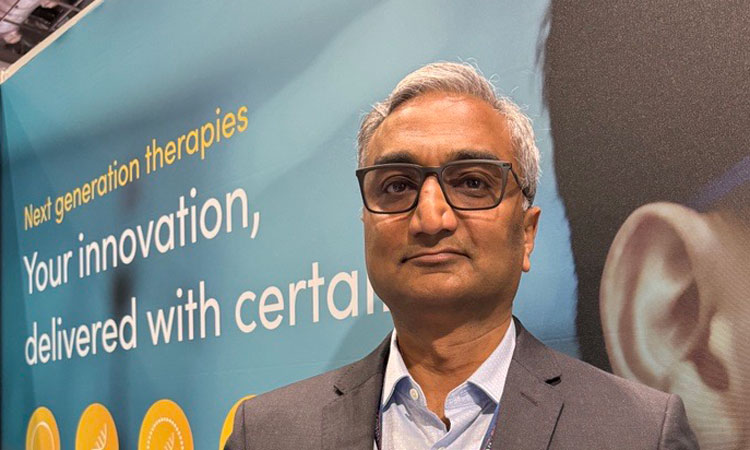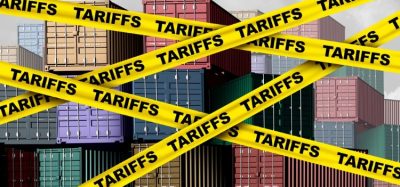From viral vectors to nucleic acids: biopharma’s evolving manufacturing landscape
Posted: 30 April 2024 | Caroline Peachey (European Pharmaceutical Review) | No comments yet
In this interview, Vikas Gupta, President of CDMO ReciBioPharm, outlines several key trends shaping the biopharma manufacturing landscape, including the rise of nucleic acid-based therapeutics, and the quest for continuous manufacturing.


What are the top three trends that you are seeing in the biopharma manufacturing space?
Vikas Gupta (VG): In the years preceding the Covid pandemic, the ATMPs market, including both the innovators as well as the contract development and manufacturing organisations (CDMOs), was a bit too optimistic about its growth prospects as it was building significant manufacturing capacity focusing primarily on viral vectors. This resulted in not only a mismatch in the required manufacturing scale but also a significant over capacity as well. Now there is a correction going on in the market where this over capacity is being addressed and CDMOs are also consolidating/redeploying their own capabilities.
On the other side, if you look at the nucleic acid space, that’s where the market has truly taken off, especially after the success of the mRNA-based COVID vaccines. ReciBioPharm works with clients in the nucleic acid space, supplying not only mRNA, but circular and self-amplifying RNA, along with the associated plasmid DNA, lipid nanoparticle (LNP) formulation and sterile filling. I see this market growth continuing for the foreseeable future and it bodes well for the overall success of the ATMPs market.
Another area to pay attention to is the early development efforts for multivalent RNA-based products; though this brings new challenges to the analytical space in quantifying multiple constructs in a formulation. I believe this is going to be an emerging trend in the market.
Let’s talk about continuous biopharma manufacturing. What are the main challenges in this area in particular?
VG: That’s an interesting question because on the bioprocessing side, the industry has been talking about continuous manufacturing for the past 10-15 years. This notion that the raw material is added at one end and the final product comes out at the other end is, I think, in many cases a bit of a blue-sky thinking. We must take a pragmatic approach towards continuous manufacturing and what it entails.
I’ll give you a specific example. If we look at mRNA-based manufacturing on the upstream side with in vitro transcription (IVT), there is no bottleneck per se. So, a batch-based process for IVT will more than suffice as far as the amount of mRNA you need to synthesise, and there is no need for continuous manufacturing. On the downstream side, when you look at tangential flow filtration (TFF) and chromatography, I think that’s where we can benefit from continuous unit operations.
Another important element is a strong emphasis on process analytical technology (PAT). We need to eliminate offline analytics as much as possible and incorporate at/inline analytics to enable both process monitoring and final product analysis. Successful PAT implementation is what is going to make bioprocess manufacturing truly continuous.
In fact, we are working with the US Food and Drug Administration (FDA) and Massachusetts Institute of Technology (MIT) on a grant where the whole emphasis is on developing a continuous mRNA vaccine manufacturing platform. It’s a three-year project and we have already developed a benchtop version of the platform. We have been working with our clients from a feasibility standpoint, so they’re sharing their mRNA constructs with us and our emphasis is to shrink the development timeline significantly from the six to nine months that it takes clients today, down to two to three months where we can take their constructs and deliver some mRNA material back to our clients.
You’ve completed the first stage of that project. Can you share some of your progress so far?
VG: The biggest emphasis is on analytics. Then the second part is how to use digital twin modelling and machine learning.
We are incorporating…machine learning elements both upstream and downstream in the nucleic acid manufacturing process
Everybody’s talking about artificial intelligence (AI) these days and I think we are taking small steps towards its implementation. For ReciBioPharm’s continuous mRNA vaccine manufacturing platform, we are capturing real-time process information as we work with our clients, and developing predictive models based on the collected data. Our goal is to share the benefits of this predictive modelling-based platform with our clients such that when they are developing their early-stage process, they can simply focus on a few pertinent process variables, know the expected impact of changing these variables, and thereby shrink the design of experiment (DOE) work significantly. We are incorporating these machine learning elements both upstream and downstream in the nucleic acid manufacturing process. In fact, we have already developed a model for the upstream IVT step, where the real-time process runs are based on data that closely mimics the predictive model. This is very encouraging and we want to continue to do that through the entire platform over time.
What are the next steps in developing this continuous mRNA manufacturing platform?
VG: Right now, we have developed a non-GMP model which is successfully demonstrating a proof of concept and we are also using it to conduct feasibility runs with our clients. The second version will be a GMP model. We are actively discussing options for our clients to use our platform onsite or avail our CDMO services utilizing the platform while working with us. The eventual goal is to have a pilot/large scale model which can meet rapid deployment pandemic needs. For example, if there is a pandemic outbreak in any part of the world, especially areas lacking existing infrastructure such as in Asia or Africa, we plan on offering this platform to enable rapid deployment of a nucleic acid based vaccine manufacturing capability.
Outside of PAT, what are the other factors to consider if you’re looking to adopt continuous manufacturing?
VG: Technological innovation continues to happen, whether it’s on the bioprocessing side, e.g. continuous chromatography, single pass TFF, or for example, mixing technologies for lipid nanoparticle (LNP) formulations. We want to make sure that we stay abreast of the latest technological trends in the market so that we can offer the best solution to our clients.
Speaking of your biopharma clients, what are you hearing about their main priorities?
VG: What we are seeing in the ATMPs space is that quite often the innovators and, in many cases, even the CDMOs themselves, have limited experience characterising these newer modalities, and both are primarily focusing on the development part and less on large-scale commercial manufacturing capabilities.
As a CDMO, having solid process development teams in house, whether it’s for viral vectors, microbiome or nucleic acid, is extremely crucial. We need to partner with our clients as they do the basic tech transfer and work with them to troubleshoot any challenges that they may have. Sometimes it is assumed that a process is fully developed before it is handed over to a CDMO, but when you start scaling it up, you start finding a lot of challenges. Open collaboration and open dialogue with clients are extremely important as we go through the process development and scale-up journey from Phase I and Phase II, through commercial.
Sticking to the cell and gene therapy space, what’s your main prediction for 2024?
VG: I think that in 2024 macroeconomic factors will continue to influence the market: in particular high interest rates which continue to lead sponsor companies to slow down their collaboration with CDMOs. For example, they will continue to mainly focus on one lead candidate, instead of working on multiple molecules in their pipeline.
I see the market picking back up towards the end of 2024 or early 2025. Again, it bodes well for CDMOs who are at the forefront of this nucleic acid market. In the microbiome sector, we are seeing new players enter the market (despite some slowdown with some of the companies exiting this market) and those new players want to work with us which is great news. When you look at viral vectors, these are also being considered for delivery of RNA therapies. Gene editing is another area where multiple technologies are coming together to create incredible treatments for patients.
Caroline Peachey spoke to Vikas Gupta at the Advanced Therapies Congress in London in March.
About the interviewee


Vikas assumed the role of President with ReciBioPharm, the biologics business unit of Recipharm in May 2023. Since taking charge, he has dedicated his efforts to fostering excellence, with a particular emphasis on advancing xRNA manufacturing, plasmid DNA, viral vector, live virus and microbiome live therapeutics within the division. With over two decades of experience in the life science industry, Vikas has held various senior positions in pharma and bioprocessing companies such as Repligen, GE Healthcare, Merck Millipore and Bayer.
Related topics
Related organisations
Massachusetts Institute of Technology (MIT), ReciBioPharm, US Food and Drug Administration (FDA)









